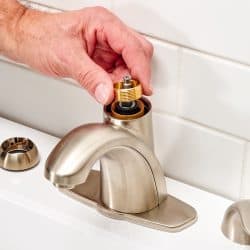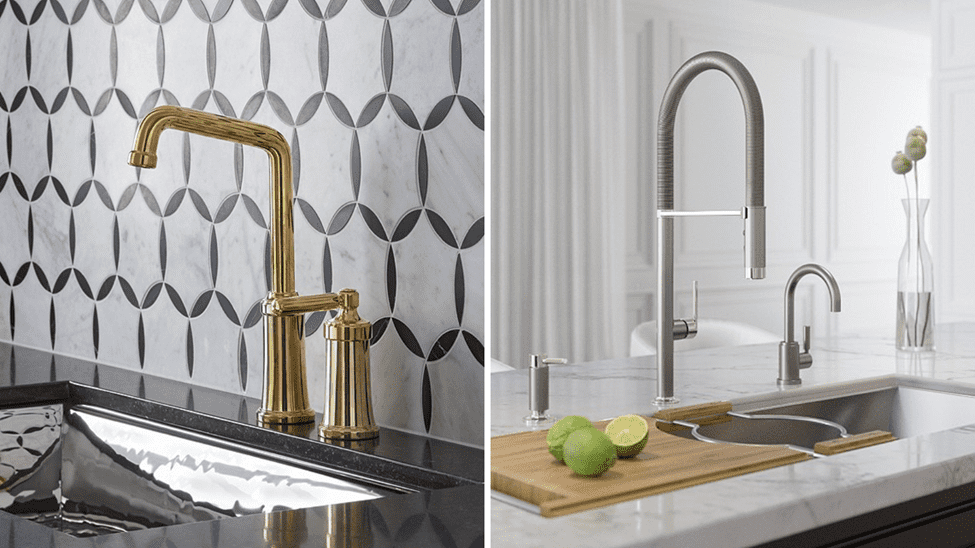Your kitchen faucet aerator working with about two different faucets doesn’t make it universal. By reading this guide, you’ll understand whether your kitchen faucet aerator is universal or not.
The main aim of having a faucet aerator is to save money. Faucet aerators reduce unnecessary water usage. The reduced and optimal water usage will, in turn, save your utility bills.
An aerator doesn’t alter water flow, but they reduce unnecessary flow if you have the right aerator. There are multiple types of faucets with different shapes, sizes, and functions.
Likewise, faucet aerators come in different sizes and functions. How a faucet aerator performs depends on the aerator’s style and function.
This article is an analysis of whether your faucet aerator is universal.
JUMP TO: Do Aerators Fit All Faucets | Working Of A Faucet Aerator | Buying Guide | Botomline |
- There’s no universal faucet aerator
- The closest thing to a universal faucet is the dual faucet aerator with its inner and outer thread system.
- Measuring and understanding your faucet needs helps determine the aerator requirements.
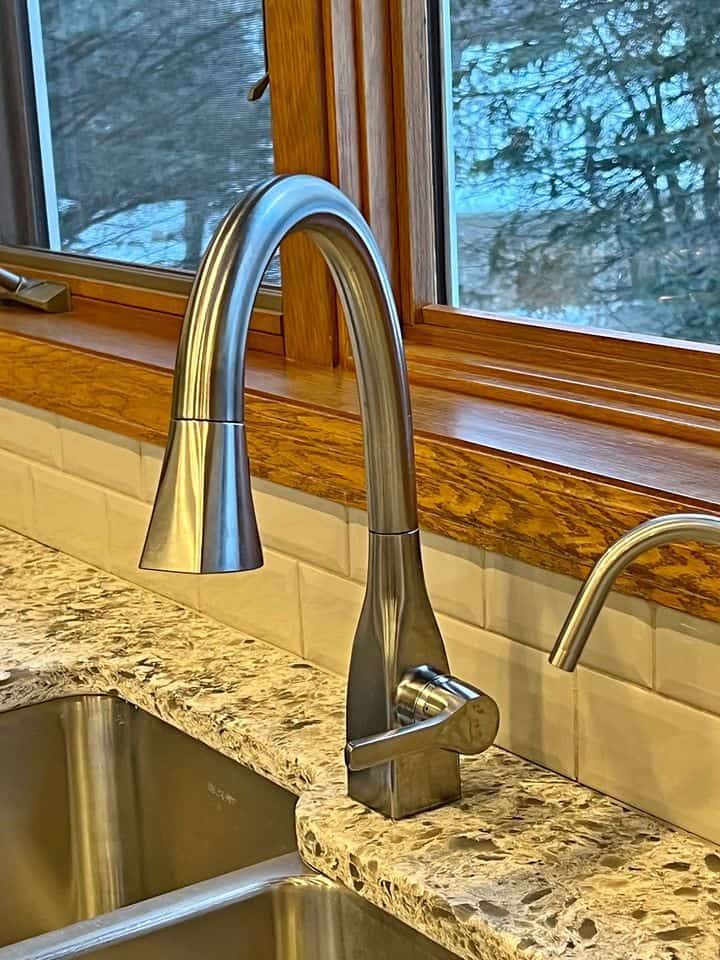
Do Aerators Fit All Faucets?
If you want a simple answer: No, faucet aerators are not universal. Many predict faucet aerators’ universal function because they can work with multiple faucets. Aerators vary per producer, but they usually obey the usual rules.
There are two main types of faucet aerators: male and female aerators. Depending on the aerator style, the male and female aerators work inversely. That means the male aerator will fit a female faucet, while the female aerator will fit a male faucet.
The main difference between male and female aerators is the threading of the kitchen faucet. If your kitchen faucet has threads on the inside, it’s the female faucet and will need a male kitchen faucet aerator.
On the other hand, if the faucet spout has threads on the outside, you have a male faucet and require a female aerator.
However, manufacturers have a dual aerator that works with male and female threaded faucets. This faucet has threads on the inside and outside, so it works for any type.
That’s why many consider dual faucet aerators universal.
Also Read: Kitchen Faucet Size Chart- Know How to Choose?
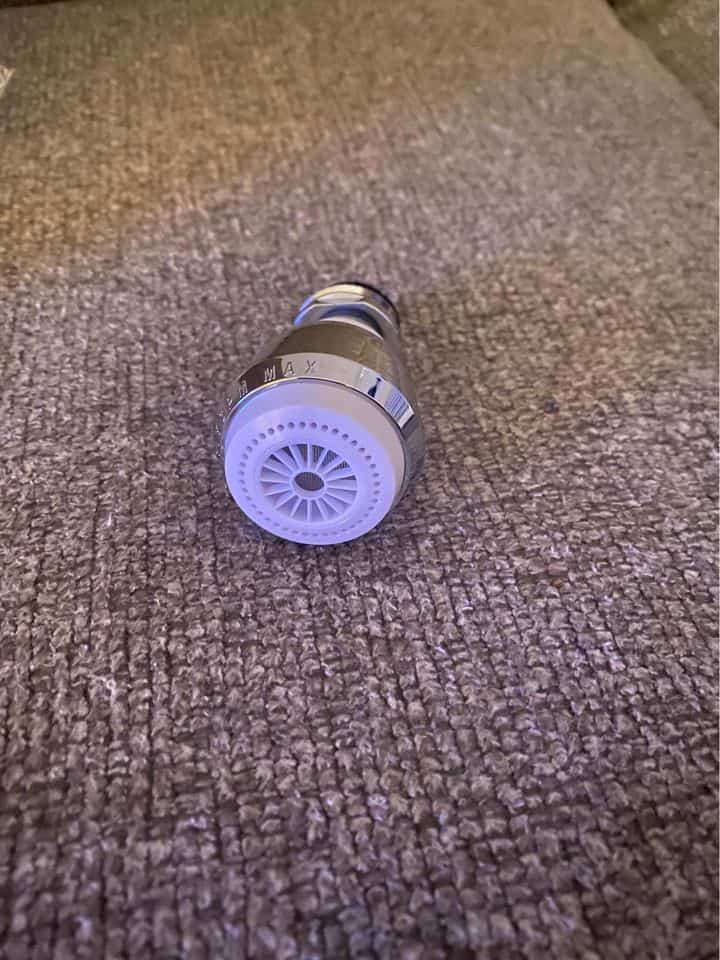
How does the aerator work?
Male aerators and female aerators have the same working principles. The only difference is the threading.
Any aerator works with the water filter and other faucet components to restrict water consumption. This will reduce the flow rate of the faucet, but it will ensure optimal water flow.
The aerator reduces water pressure by adding air to the water. This will reduce water consumption without affecting how water flows.
Some aerators double as water restrictors and also mix air into the faucet. These aerators are water-saving aerators. But not all aerators have this design feature.
TIPS: If your faucet aerator doubles as a flow restrictor, it will affect the water supply into the home – especially if you have a water filter installed.
How to get Faucet Aerator Universal?
Technically, there’s nothing like a universal faucet aerator. While the dual faucet aerators work well with both male and female types, it doesn’t make them universal.
Apart from having a compatible female or male faucet aerator, you need to have the right size. The sizing of most faucet aerators determines the one it can work for best.
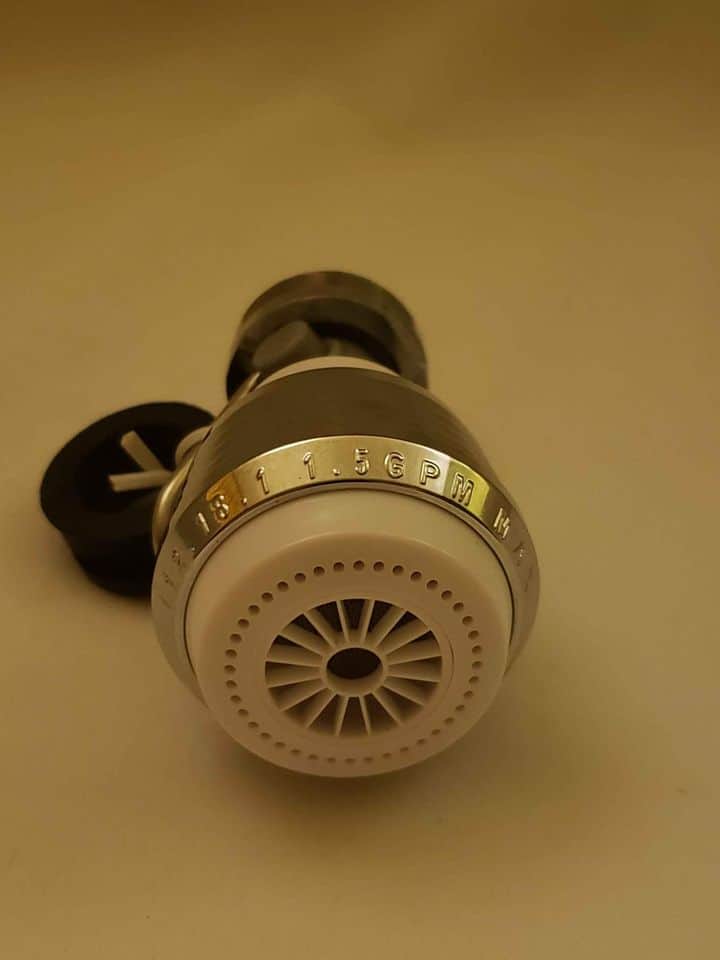
How to Know your Aerator Size
A faucet aerator mixes air into the water to reduce the water pressure and save water. However, apart from the faucet types used to differentiate the aerator, the aerator sizes are also crucial.
The outer diameter differentiates three common faucet aerator sizes:
- Junior size aerator: This aerator has a 13/16 inches size for the male type and 3/4 inches for the female type.
- Regular-sized aerator: As the name suggests, this is the most common aerator type. The male aerator size is 15/16 inches, while the female is 55/64 inches.
- Tom thumb-sized aerator: The Tom thumb-sized aerator isn’t so common. The sizes are M18 and M16 for the male and female aerators.
TIPS: Remember, the male aerators work with female faucets and vice versa.
The best way to determine your aerator type and size is by removing it. A regular screwdriver should do, but in some cases, you may need a wrench.
You’ll also need coins to determine the exact size. You need a quarter, a dime, and a nickel.
Here’s the process to check:
- Lose your kitchen faucet aerators
- Get your three coins
- Compare the diameter of the coin to the outer diameter of the aerator.
- If the size fits the quarter coin, you have a regular-sized aerator.
- If it fits the nickel, you have the junior-sized aerator.
- Furthermore, if the diameter is exactly the size of a dime, you have a tom thumb-size aerator.
CAUTION: Removing your kitchen faucet aerators can be tricky – especially for recessed aerators. You’ll need an aerator key.
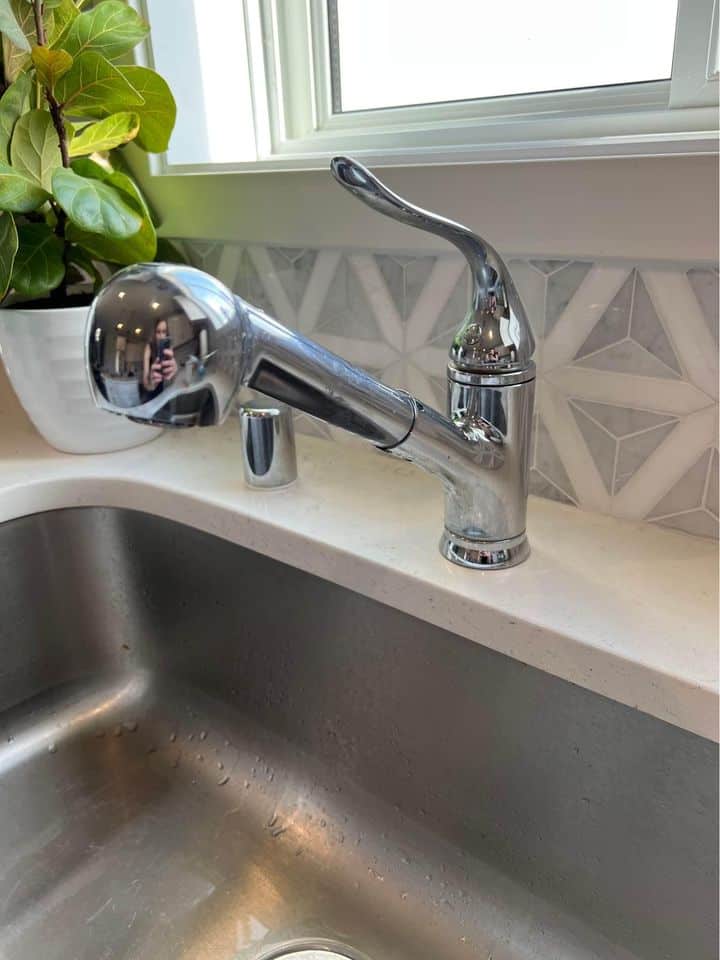
Factors To Consider Before Choosing An Aerators
Choosing to install or replace an existing aerator is great for saving water and cutting utility bills. It’s always better to involve an expert before making such decisions. They understand your water and plumbing needs and can determine the best flow rates you need.
Some of the factors that you should consider before you buy any aerator include;
Related Read: How to Identify Kitchen Faucet Brand
Your kitchen faucet type
The first question to ask is your kitchen faucet type. What do you have there? Are the threads inside or outside?
As I’ve explained: if the faucet has threads on the outside, it’s a male faucet and will work with a female threaded aerator.
On the other hand, if the threads are inside the faucet, it’s a female faucet, requiring a male-threaded aerator.
The Size
As explained, the size of a faucet aerator is also a crucial factor to consider. You can have the regular, junior, or tom thumb aerators. The regular ones usually work with almost every faucet, which is why they’re popular.
CAUTION: If you’re installing a faucet newly, allow your plumber to pick the right size for the aerator.
The aerator flow type
This is probably the most important factor in terms of functionality. Threading and size aren’t the only factors used to classify faucet aerators. The flowing style of the faucet aerator is another category.
Based on flow rates – the main aerator styles include:
- Laminar stream
- Spray Stream aerators
- Aerated stream aerators
- Rain spray Stream aerators
- Mikado stream aerators
This category of kitchen faucet aerators refers to the flow style of the kitchen, and you can choose based on what you want.
For instance, if you want a simple water stream that’s also a non-splashing stream, you can choose the Laminar water stream aerators. The laminar is a low-flow aerator that is better at saving water pressure, and it’s also non-splashing. It also provides you with a non-aerated water stream.
However, if you need a more significant and whiter water stream to fill large pots and do outdoor tasks, the rain spray stream aerators may be the best.
These aerators provide so much water that you may get confused. However, you’ll need a solution to reduce splashing since this is not a non-splashing kitchen faucet aerator.
TIPS: The spray stream faucet is the most commonly used aerator because of its functionality and versatility.
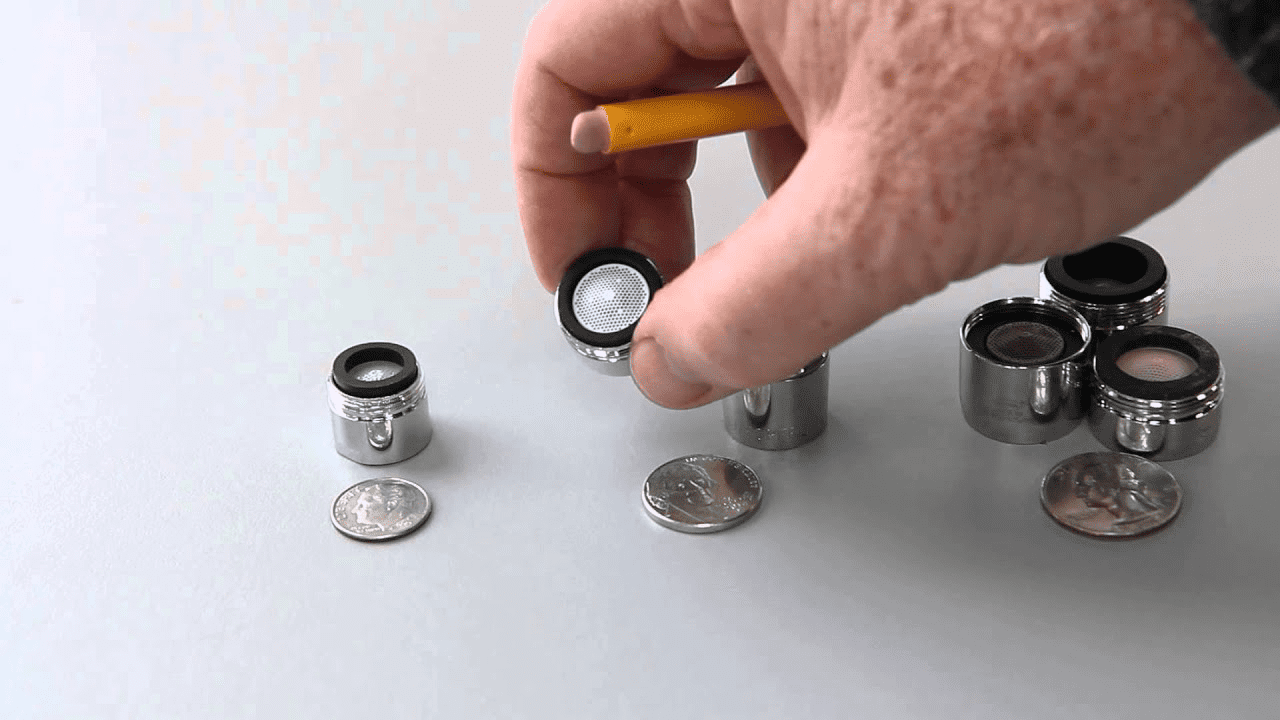
Source: nrgideas.com
Flow rate
The flow types of aerators affect the water supply and flow into your home. To avoid buying faucet aerators that frustrate you, you need to consider the flow rates.
Gallons per minute (GPM) is the measurement unit of flow rate. Your plumber is the best person to help determine the GPM of different aerators. Research says the federal standard for the kitchen faucet water flow should be around 2.2 GPM.
But before that, you need to choose the amount of water required. If you have a large family, you’ll need a large GPM, but it can be reduced if it’s only you.
CAUTION: If you take drinking water from your faucet, you can use a water filter to ensure safety.
Bottomline
One thing is crystal clear: your kitchen faucets are not universal, regardless of how they can fit multiple faucets.
The nearest type of faucet to universality is the dual faucet. However, based on the size and flow type, it can’t replace just any aerator.
The goal is to pick the correct aerator that saves water without affecting the flow. It’s always better to have your plumbing expert handle the aerator choice.
They have the experience necessary to make the right choices. Also, they can help with your kitchen faucet aerators maintenance.
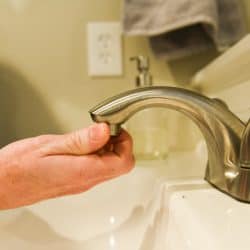
![16 Types of Kitchen Faucets Explained [With Pros + Cons] 16 Types of Kitchen Faucets Explained [With Pros + Cons]](https://houseadorable.com/wp-content/uploads/2023/02/Roca_griferia_cocina_mencia_negro_DEF_900x505_acf_cropped-1@2x-250x250.jpg)
![Centerset Vs. Widespread Faucets [8 Differences Explained] Centerset Vs. Widespread Faucets [8 Differences Explained]](https://houseadorable.com/wp-content/uploads/2023/03/1_332369605_6500081363358836_8480186754416832788_n-250x250.jpg)
![Kitchen Faucet Vs. Bar Faucet [What is The Difference] Kitchen Faucet Vs. Bar Faucet [What is The Difference]](https://houseadorable.com/wp-content/uploads/2023/01/GettyImages-1177440335-0210e69740fd4045ab6a88f1588e9f4f.jpg)
![Chrome Vs. Stainless Steel Faucets: [An In-Depth Analysis] Chrome Vs. Stainless Steel Faucets: [An In-Depth Analysis]](https://houseadorable.com/wp-content/uploads/2023/03/51gDGcVWBL._AC_UF10001000_QL80_-250x250.jpg)
![Pros and Cons of Wall-Mounted Faucets : [Includes Buying Guide] Pros and Cons of Wall-Mounted Faucets : [Includes Buying Guide]](https://houseadorable.com/wp-content/uploads/2023/02/s-l1600-250x250.jpg)
